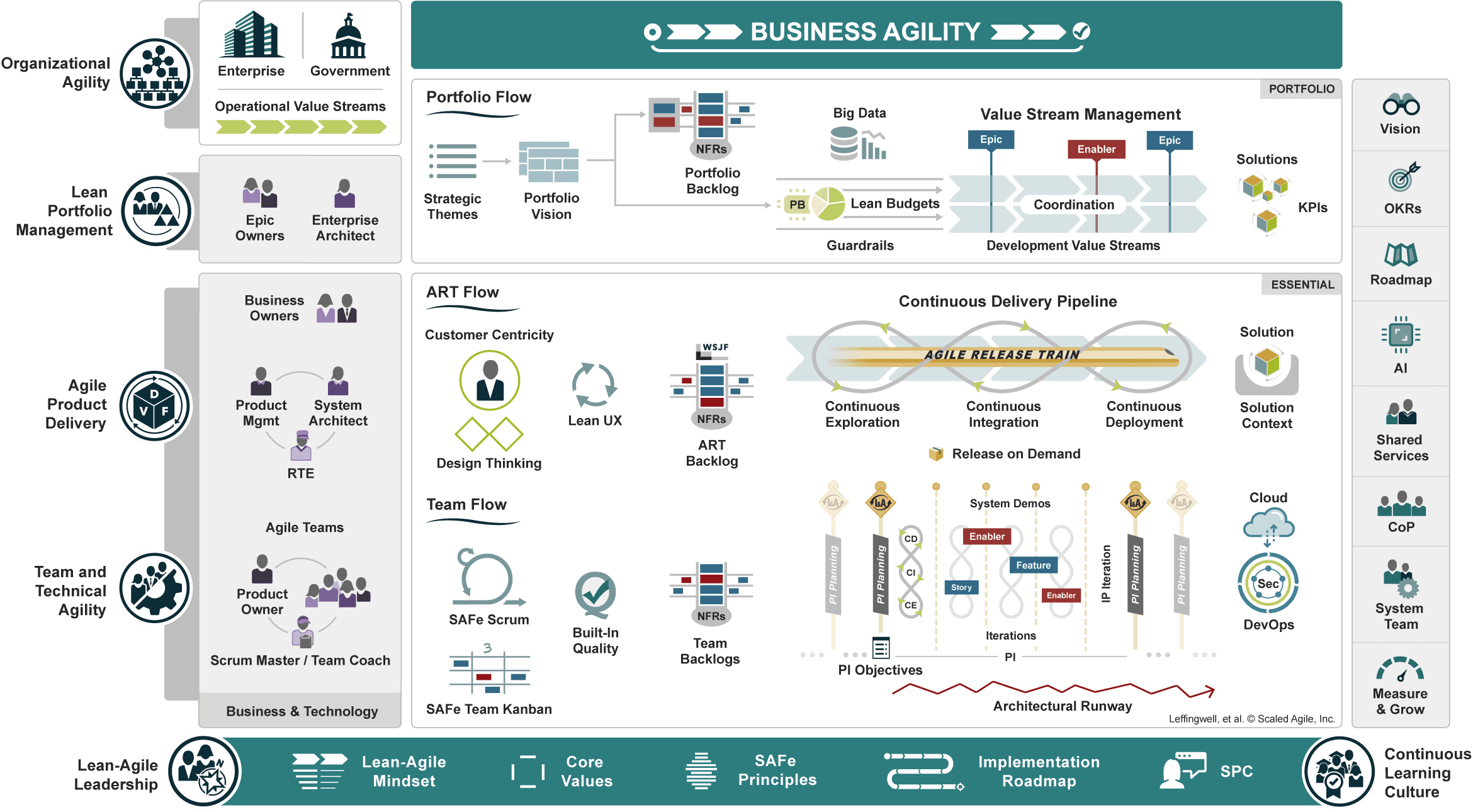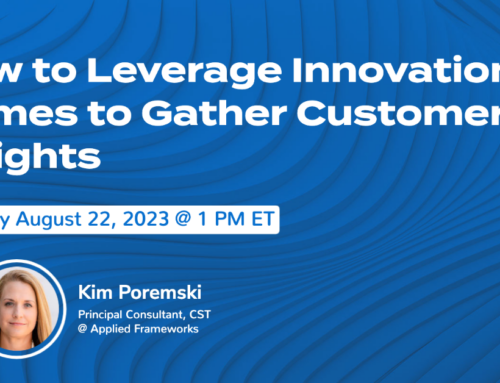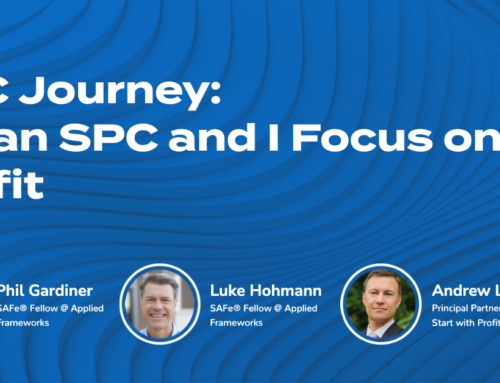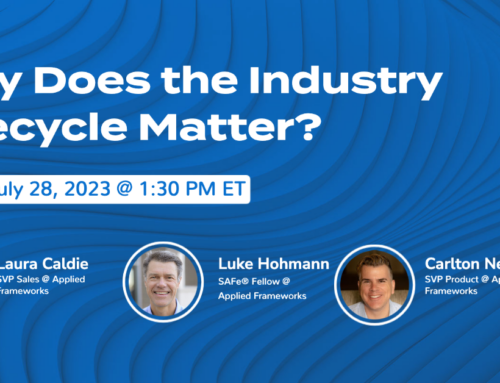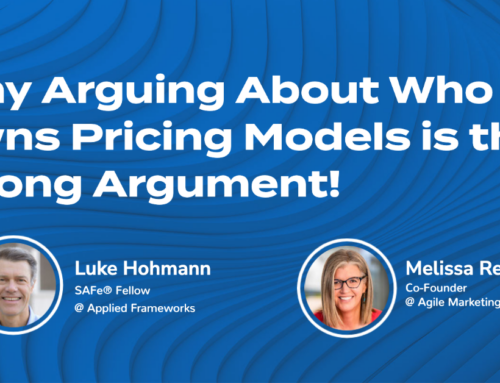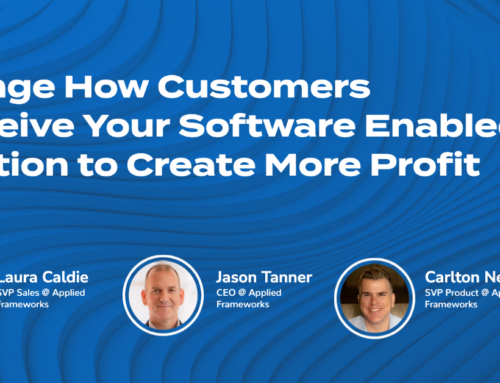On March 15, 2023, Scaled Agile,Inc. announced the next evolution of SAFe® (Scaled Agile Framework®). SAFe 6.0 introduces six main themes, and I will dive into each specific area over the coming months with more blogs and webinars. But this announcement is exciting, and because of that, I am excited. So here are the top five things I love about SAFe 6.0.
- Business outcomes and OKRs for all.
- SAFe is for the entire organization.
- Lean Portfolio Management expands focus to include Operational Value Streams.
- Executive Teams are Agile Teams.
- Flow is a primary focus.
Business outcomes and OKRs for all
SAFe® is the vehicle that helps a company achieve greater business agility, profitability, and sustainability instead of seeing it as a destination one pursues. Two changes to the SAFe 6.0 Big Picture’s spanning palette reflect the importance of metrics and measurement as a core concept. The “Metrics” icon has been replaced with “Measure and Grow,” and OKRs (Objectives and Key Results) have been added.
The updated SAFe 6.0 Measure and Grow article’s three measures help answer the three questions I see many business executives asking:
- Measurable business outcomes answer “What am I going to get?”
- Flow metrics lead to faster and more predictable delivery, so you can answer, “When will I get it?”
- Competency measures and improvements to the way of working answer “Do I believe you?”
Whether you are just starting your SAFe journey or are well on your way, it is essential to understand how to gauge if you are achieving measurable business outcomes. To achieve a profitable software-enabled solution, you optimize flow through the six SAFe flow metrics.

Regarding outcomes, the new SAFe® 6.0 OKRs article provides guidance for leveraging OKRs as strategic themes to create alignment across the entire portfolio. Additionally, it illustrates the importance of including a hypothesis with measurable business outcomes for each significant opportunity, represented as a SAFe Epic.

The OKRs article includes a third use case that leverages this model for setting the objectives for a SAFe transformation. When facilitating a LACE (Lean-Agile Center of Excellence) kickoff, I highlight similarities between the LACE canvas and the Epic Hypothesis Statement in SAFe. Having objectives and measures for the LACE allows the guiding coalition to provide measurable evidence of the benefits of the new way of working.
SAFe® is for the entire organization.
When I think of the highest impact SAFe implementations that I’ve seen or been honored to be part of, those that come to mind are those transformations that move beyond IT and include the entire organization in a new way of working.
SAFe 6.0 introduces five new patterns for leveraging the power of business and technology together. These are not brand new concepts; however, having them as part of the framework will inspire more leaders to pursue Business Agility together instead of viewing SAFe as the latest approach to IT delivery.

Think about the role of the Business Owners and the positive impact that these business executives have on all facets of PI Planning when they attend the entire two-day event. It is powerful when all members of the ART get to hear, first-hand, what matters to the business and how the longer-term strategy supports customer centricity. When Business Owners circulate during team breakouts, insights are gained through conversations between those who build the solution and those responsible for its profitability. As Business Owners observe the draft and final plan reviews when they are already familiarized with the team’s objectives, risks, etc., the focus shifts to solidifying the plan instead of accepting or rejecting it.
The Business Owner is just the start. Now, imagine when those same types of conversations occur regularly throughout the PI, as the ART includes people who know the industry and keep abreast of the changing pulse of their markets as well as the people and teams who care for legal, marketing, operations, etc. In SAFe 6.0, this pattern is called a Business-Enabled ART, and I have seen it bring myriad benefits to businesses and their customers.
Benefits of Business-Enabled ARTs certainly include accelerated business results such as faster time to market, higher quality, and more desirable solutions. At the same time, having the business on board the train opens the door to deeper connections with the customers and a better understanding of the value the ART is delivering. Those with responsibility for the performance of a solution can bring insights into concepts such as profitability that are critical to sustainable success yet may be discussed outside the context of an ART. Needs like licensing and pricing strategy can become part of the ART’s backlog as business people, product managers, etc., leverage tools such as Customer Benefit Analysis and the Profit Stream Canvas to optimize the profitability of the solution.
As organizations embrace these practices, they can achieve a state where people associate their role as part of the ART instead of thinking first about where they fall in the corporate hierarchy. These can lead to sustainability benefits, such as how people approach work. As a result, there is more joy, purpose, confidence, etc.
Lean Portfolio Management expands focus to include Operational Value Streams.
For any company pursuing greater business agility, I view the adoption of Lean Portfolio Management (LPM) as a “when” and not an “if.” As someone who believes deeply in the exponentially positive impact of great LPM on an enterprise, I work to identify ways to prepare for LPM early. To this end, I myself recommending that the Strategy and Investment funding collaboration be a cross-functional team of executives representing business, technology, operations, legal, marketing, etc. This practice leads to questions about whether the operational value stream can be part of the portfolio. With SAFe® 6.0, the answer is yes!
The Business and Technology article includes a pattern called a “Combined Portfolio,” which supports including operational and development value streams in the same SAFe portfolio. As more and more companies are implementing SAFe as a way of working for the company, not just the technology organizations, this pattern streamlines communication, and avoids multiple backlogs and “lists” of work while creating a singular strategic vision through the use of a single set of Strategic Themes.

When I think about this pattern, I’m reminded of an engagement with a major software company’s customer service and support business. Our team helped the IT organization launch an ART and I was asked to help get the business involved. We were successful in getting them deeply engaged; however, when the business wanted to implement LPM, the technology organization was not willing to move away from their traditional approach to portfolio and project management. The business moved forward anyway and implemented LPM around their operational value streams. While they reaped the rewards such as increased alignment and transparency, they faced challenges when attempting to forecast and create roadmaps as many of their opportunities required their IT partners. I think the new guidance would have helped tip the scales with the more senior technology leaders as they felt that the portfolio should have been in IT only as that is where the development value streams were housed. With current customers exploring LPM, such as a state-based Healthcare company, we have already discussed the power of a combined portfolio.
Executive Teams are Agile Teams.
Another pattern in the Business and Technology article is the Agile Executive Team, which illustrates how to operate the C-suite as an Agile team to provide alignment around strategy and execution at the highest level of the organization. When you think about Agile team members, do you think about your senior executives first? When you consider those individuals who epitomize Lean-Agile values and principles as they lead by example, do you think about your CFO, COO, CTO, etc? Imagine what would be possible if leadership adopted the same success patterns that allow an Agile team to deliver more value sooner.
The best LPM implementations I’ve seen are ones where the senior executives and leaders who form the strategy work as an Agile team. They have a PO, a team coach/facilitator, work from a backlog, meet on a cadence, plan together, and retrospect. They can even have a unique team name. My favorite one thus far was the “Ministry of Magic” with a tagline of “You have to ask MoM for money.”
Let’s explore that example.
A group of senior business leaders team for a cybersecurity business was approached by their IT partners about adopting SAFe®. As value streams and ARTs were being identified and launched, it became evident that there were challenges beyond IT’s delivery. As a leadership group, they decided to focus on “a new way of working that would allow them to deliver more value sooner” within their existing budget.
Lean Portfolio Management was leveraged to bring them together and shift from an individual focus on their respective lines of business to a holistic approach for the entire business. They decided to become an Agile team and, as they wanted to be cross-functional, they included executives focused on business, IT, compliance, marketing, and operations. I had the honor of serving as their coach and the AVP of the PMO served as the Scrum Master, with the officer of the corporation serving as a Product Owner. The team heard that coaches were encouraging Agile teams to choose a “fun name” and decided to do the same, choosing “Ministry of Magic.” As they learned more about SAFe and how to work as an agile team, they established a cadence of events focused on strategy, execution, and moving to a new way of working.
Over the months, I saw a marked increase in trust and transparency while they began to focus on their portfolio as a team. During prioritization discussions, shark-tank style go/no-go reviews of epic hypothesis statements and lean business cases, people stepped out of their traditional area of focus. They approached everything as a team and harnessed this power when visualizing and resolving systemic impediments and risks that bubbled up from the ARTs. Finally, they support the ARTs as a team of leaders, providing common messaging around strategy, vision, etc. Their example served as an example for their people and the larger enterprise as a whole. They were all there when their CMO attended one of the first Inspect and Adapt events and stated that they needed to keep going with the new way of working as they had delivered more value (by May) than they did the entire previous calendar year.
Flow is a primary focus.
Regardless of the industry, getting value to flow faster and more efficiently is a cornerstone of sustainable success at scale. With the release of SAFe® 6.0, the ten SAFe Principles have been updated, and the one that excites me the most is “#6 Make Value Flow Without Interruptions.” There is so much goodness underneath this one principle, and I love the simplicity of the statement as it flows off the tongue.
What is Flow? Flow is all about the way work goes through the entire value stream, with more time spent on the activities and actions that add value while minimizing the delays, handoffs, and rework that can increase lead time and reduce quality.
When you think about Flow in SAFe, remember the number eight. There are eight common properties of flow and eight flow accelerators. Together, these describe how SAFe defines flow while providing patterns that help you ensure that value can flow without interruptions.

As a fan of leveraging the power of collaborative value stream mapping, I am very excited about all the great things that will come from the flow accelerators and helping people leverage them. There is so much to say about this topic so look for additional blogs about flow and how it is leveraged within operational value streams, development value streams, and even Profit Streams™. For tips and tricks, check out our Value Stream Mapping webinar to learn how to add more Lean to your Agile. read Rachele Maurer’s blog regarding the Alignment the the activity provides, and view Luke Hohmann’s webinar “What is a Profit Stream?”
I could continue highlighting what I’m excited about with this most recent release, but I’ll leave those explorations for another post.
Are you and your team ready for SAFe 6.0? Reach out to learn more about our SAFe consulting services and check out our upcoming courses featuring SAFe 6.0 (Implementing SAFe, Leading SAFe, Lean Portfolio Management (LPM), Product Owner/Product Manager (POPM), SAFe Scrum Master).

